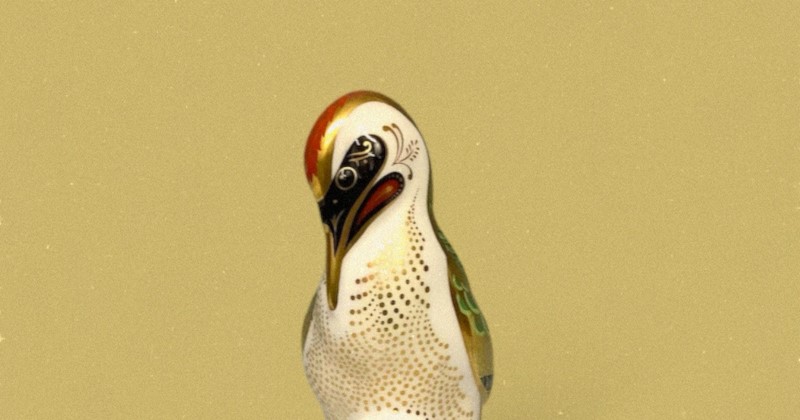Even at my advanced age I endeavour not to repeat myself, and well recall regaling readers with a piece about Derbyshire salt-glazed pottery the second time I ever wrote this column at the end of 2011. Yet such a fine local collection of Derbyshire Salt Glaze was offered for sale at the beginning of Bamford’s September fine art sale that I could not resist the temptation to say some more about it.
The collection itself contains many early pieces – 17th and early 18th mainly - as well as the more familiar earlier 19th century character flasks and such like. I recall getting to know this particular collection when my senior colleague, the late Roy Hughes (who had a particular enthusiasm for this type of pottery), mounted an exhibition of the very best in local collections at Derby Museum in 1981. The exhibition was very well received and led, the following year, to the publication of the definitive book on the subject, English Brown Stoneware 1670-1900 written in collaboration with Adrian Oswald and R J C Hildyard (Faber 1982). The exhibition also included the cream of Derby Museums’ own collection.
The exhibition was sufficiently well receive to have attracted large numbers of visitors and had a very impressive effect on the prices of these pieces, further boosted by the appearance of the book, packed ass it is with appendices on makers’ marks, patterns and other such helpful collectors’ guides.
The collection was built up by Ruth Evans, who started collecting in the early 1970s, following a pre-Christmas shopping trip, when she purchased her first salt glazed jug. This kindled her fascination into this pottery, particularly the wares of Derbyshire and shortly afterwards she returned to the same shop, spending £100 she had been given by an uncle on the remaining items. Although then knowing very little about salt glaze, she decided to research it and, with the help of Roy Hughes, became one of the country’s leading expert in the field. The diversity of this particular collection is a legacy of her passion and enduring interest to this remarkably unassuming yet mysterious pottery
Since then, however, interest in this attractive form of native pottery has declined somewhat and taken the prices down with them, but when this notable collection was sold at Bamford’s Derby salerooms at the end of September, interest has clearly returned.
The centrepiece of the sale is one of those loveable but rare ‘Nottingham bears’ - a Derbyshire/Nottinghamshire brown salt glazed stoneware dancing bear jug and cover. The bear is modelled clutching a dog, applied with clay chippings (‘grog’) to simulate fur, this usually called ‘breadcrumb’ finish. His snout is pierced, details to the eyes, collar, snout and paws all picked out in brown lustre, 10 inches high, and dating, I would guess from about.1750-1770. It could make £1,000 quite easily.
The use of these bear jugs seems to have varied; Llewellyn Jewitt writing in the 19th century considered some to have been tobacco jars, but the fact that at least one has been recorded with a tap, also suggests that som e kind of liquid was intended for some, at least. Thew inspiration seem most likely to have derived from the dancing bears seen at travelling shows in those days rather than bear baiting.
The other really cracking item was an 18th century Nottingham brown salt glazed stoneware two-handled loving cup, modelled like a thistle, incised with Rich. & Mary Padley, 1788 and also with stylised tulips, flowerheads and leafy scrolls. It’s handles were like ribbed straps and at 101/2 inches was a good size, too and carried an estimate of £400-600, perhaps a trifle conservative if anything. By the way, Midlands salt glazed pottery bears more inscriptions than any other British ceramic body, which greatly enlivens research. Here, we clearly have a wedding present and indeed, Richard Padley, named here, was born in 1757 at Worksop and lived with Mary, after their 1788, marriage at East Retford and had a number of children. Richard lived to a good age, dying at Southwell in 1840.
Sometimes these little pieces of family history can lead to considerable competition at the auction among descendants eager to own a precious relic of their ancestry, which can push the price up beyond top estimate no end. An extreme example which I remember from a few years ago involved a Sunderland creamware jug with the names of a couple and a wedding date estimated at a perfectly reasonable £100-120 fetching £2,200 after a bidding war between two descendants, previously unknown to each other!
Despite the high estimates for the two objects mentioned above, there were plenty, of affordable items, like the very first lot a Victoria and Albert commemorative mug, presumably from 1841 when the married, estimated at £40-60 and by no means a rarity. A whole variety of early-mid-nineteenth century flasks were on offer for similar prices, and a number of half-length effigies of famous people of the day – Sir Robert Peel, the Duke of Wellington, Earl Grey amongst them - modelled as flasks, mainly in the £100-150 bracket. There was also a cottage tobacco jar and a delightful toast rack also estimated at £100-150, but likely to do better. Also plenty of those intriguing puzzle jugs: three, all estimated at £80-120.
These are true local antiques, packed with history, useful, good looking and above all relatively affordable. I feel sure that it will not be too long before a collection of salt-glazed stone ware to match that assembled by Ruth Evans will have been built up. Perhaps this sale would have been the place to start!
Finally I would like to record the considerable assistance rendered by my daughter Cornelia in the preparation of this article.



